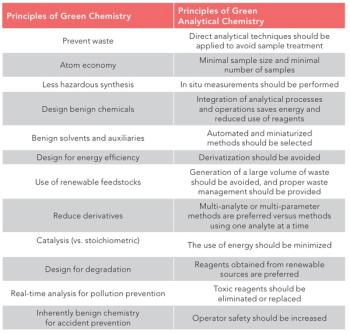
Previewing The Series on the North Carolina PFAST Network
Because PFAS is a hot topic, LCGC International will be releasing a video series about it, which will feature numerous North Carolina researchers. We preview this video series here.
Per- and polyfluoroalkyl substances (PFAS) are synthetic chemicals used in various industrial and consumer products because of their resistance to heat, water, and oil (1). Found in nonstick cookware, waterproof fabrics, firefighting foams, and food packaging, PFAS persist in the environment and accumulate in living organisms, leading to widespread contamination of water, soil, and air (2). Because they do not easily degrade, these chemicals pose significant environmental and health risks (3). Studies have linked PFAS exposure to liver damage, immune system suppression, developmental issues, and an increased risk of certain cancers (3).
To address these concerns, researchers and regulatory agencies are developing methods to detect, remove, and replace PFAS. An upcoming multi-day news series will highlight the work being conducted by the North Carolina PFAS Testing (PFAST) Network to mitigate the effects of PFAS in the environment. The North Carolina PFAS Testing Network is a collaborative statewide research study comprised of leading researchers from North Carolina laboratories that are working together to better understand the extent of the PFAS issue in North Carolina (4). The main objective of this multidisciplinary research initiative is to document the presence of PFAS, understand its effects, and develop solutions to solve the problems PFAS cause (4).
This series will spotlight the work of three research groups: Lee Ferguson’s group at Duke University; Mei Sun’s group at the University of North Carolina, Charlotte; and Ralph Mead’s group at the University of North Carolina, Wilmington. Lee Ferguson, who is a Professor of Civil and Environmental Engineering at Duke University, runs a laboratory that is focused on developing analytical techniques using high-resolution mass spectrometry (HRMS) to detect emerging contaminants in wastewater and drinking water (5). Ferguson’s research includes non-targeted analysis workflows, identifying PFAS in water, and assessing the impact of microplastic-associated chemicals on aquatic environments (5). By advancing detection methods, his work contributes to understanding and mitigating PFAS contamination, ultimately supporting efforts to improve environmental and public health.
Mei Sun is an associate professor of civil and environmental engineering at the University of North Carolina, Charlotte. Her research focuses on developing sustainable water treatment and reuse solutions (6). Her work addresses challenges at the water-energy nexus by applying expertise in water chemistry, environmental electrochemistry, catalytic chemistry, and biogeochemistry. Key research areas include developing innovative treatment technologies to remove emerging contaminants from water and wastewater, studying the fate, transport, and degradation of contaminants in different environmental matrices, and advancing methods for remediating contaminated subsurfaces (6).
And finally, the series will spotlight Ralph Mead and his team at the University of North Carolina, Wilmington. The Ralph Mead laboratory specializes in environmental organic geochemistry, focusing on the occurrence, transport, and fate of organic compounds in coastal environments (7). A key research area is the study of PFAS, investigating their environmental persistence, global distribution, and potential microbial degradation. The lab collaborates on PFAS biodegradation studies to understand bacterial interactions with legacy and replacement PFAS compounds (7). Additionally, they explore coastal carbon cycling, using molecular markers to track organic carbon exchanges in salt marshes and river margins, particularly in North Carolina, where climate change and sea-level rise pose significant environmental challenges (7).
This upcoming video series will feature interviews with Ferguson, Sun, and Mead, as well as members of their teams. They will highlight how the state of North Carolina is prioritizing PFAS research to safeguard the health of its citizens. The common thread between these three researchers and their laboratories is that they all use chromatography in their work. These videos will show that chromatography is and will continue to play a major role in combatting the issue of PFAS in the environment and help preserve human health.
References
- National Institute of Environmental Health Sciences. NIH.gov. Available at:
https://www.niehs.nih.gov/health/topics/agents/pfc (accessed 2025-02-19). - U.S. Environmental Protection Agency, PFAS Explained. EPA.gov. Available at:
https://www.epa.gov/pfas/pfas-explained (accessed 2025-02-19). - U.S. Department of Veterans Affairs, PFAS–Perfluoroalkyl and Polyfluoroalkyl Substances. VA.gov. Available at:
https://www.publichealth.va.gov/exposures/pfas.asp (accessed 2025-02-19). - North Carolina PFAST Network, Main Homepage. NC PFAST Network. Available at:
https://ncpfastnetwork.com/ (accessed 2025-03-07). - Duke University, P. Lee Ferguson. Nicholas.Duke.edu. Available at:
https://nicholas.duke.edu/people/faculty/ferguson (accessed 2025-02-19). - University of North Carolina, Charlotte, Mei Sun Research Page. Charlotte.edu. Available at:
https://coefs.charlotte.edu/msun8/ (accessed 2025-03-07). - University of North Carolina, Wilmington, Research Projects. Google Sites. Available at:
https://sites.google.com/view/eogl/research?authuser=0 (accessed 2025-03-07).
Newsletter
Join the global community of analytical scientists who trust LCGC for insights on the latest techniques, trends, and expert solutions in chromatography.




